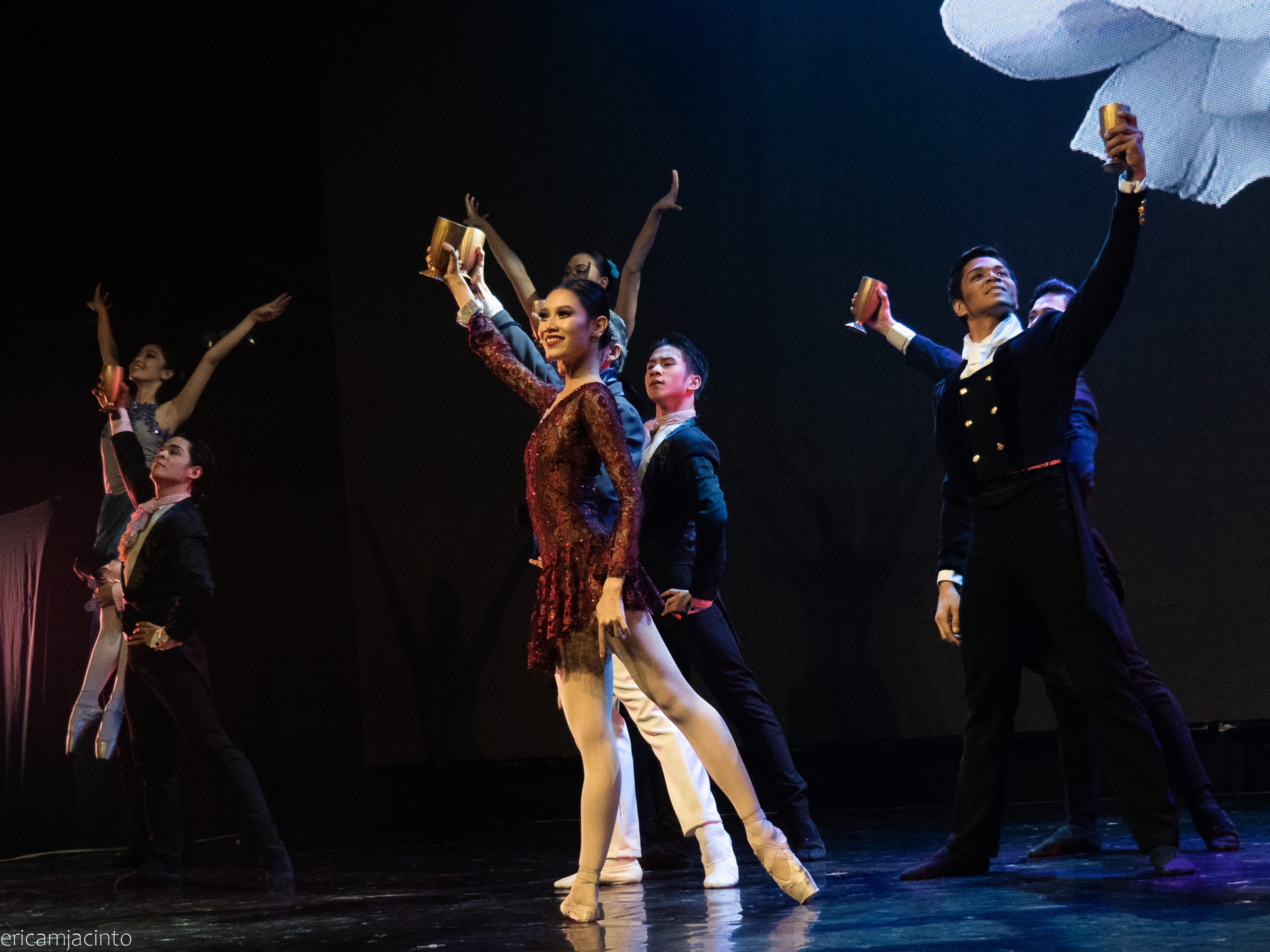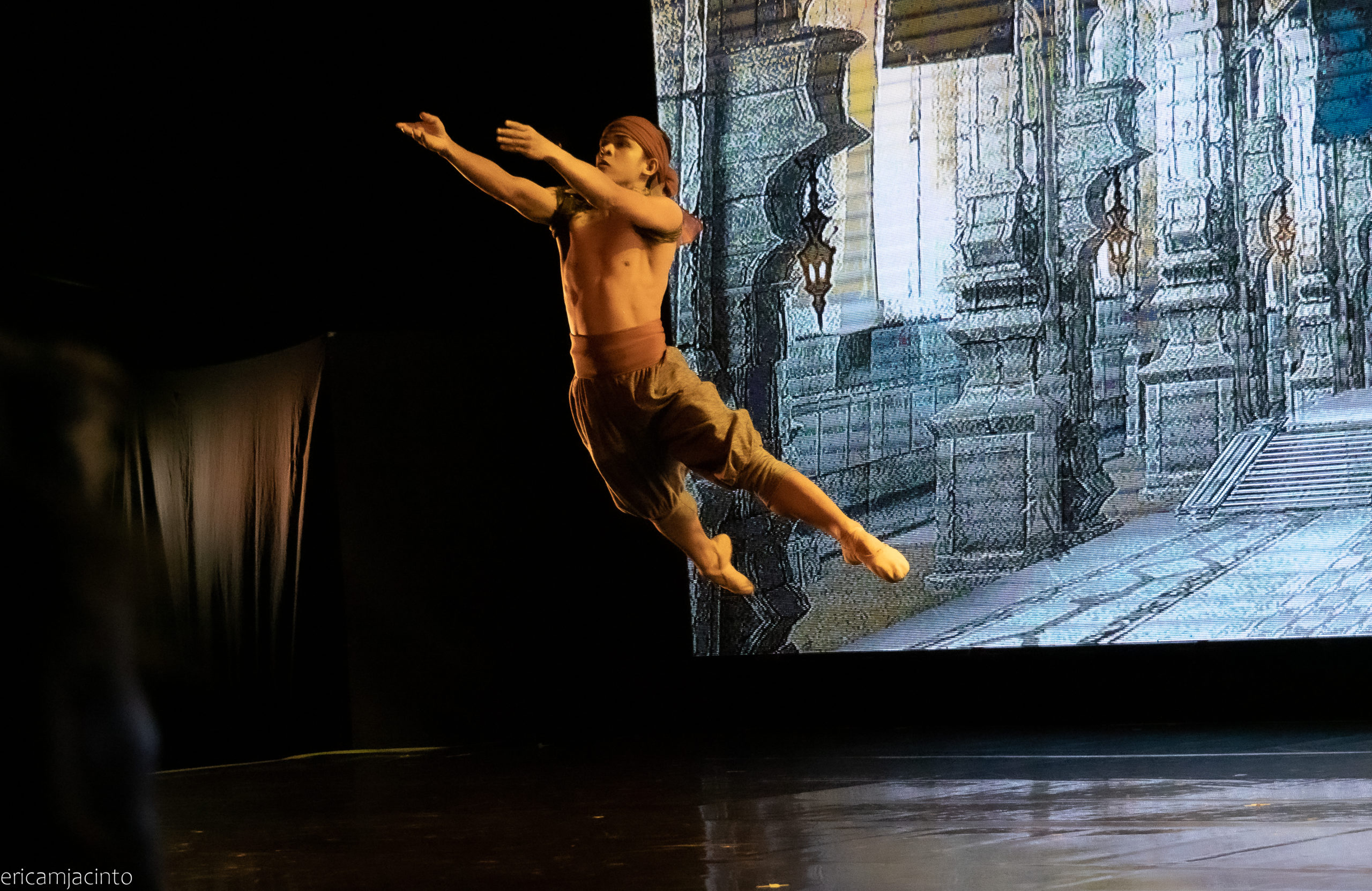
Despite a cramped stage at Samsung Hall in SM Aura, Ballet Manila (BM) dancers brought Latin songs and Italian arias to life through their intense energy, soaring leaps and precise ensemble work. The sight of an ensemble of dancers unfolding high leg extensions was breathtaking. A good crowd braved the mall despite the fears of the new coronavirus (COVID-19) outbreak to enjoy the twin-bill program “Carmina Burana” by principal danseur Rudy de Dios and artistic director Lisa Macuja-Elizalde’s “La Traviata.”
De Dios took a leave of absence to work on 23 of the 24 poems in Carl Orff’s cantata, “Carmina Burana.” While other choreographers interpreted the cantata with dances on lust and greed, De Dios expounded it with a narrative and a moral viewpoint. He wove a story of a fictional city, Tezra, which was plagued by a severe drought.
The people prayed to their deity Agape (Joan Emery Sia) to bring rains. Meanwhile, the leader of evil, Atheos (John Balagot), campaigned to the people that their patroness had forsaken them. The antagonist tried to persuade them to join his side. Tezra’s king, Solom (Romeo Peralta) united his people to remain devoted to Agape. With the help of guardian, Spero (Gerardo Francisco), they thwarted Atheos’ tactics and drove him away. Suddenly the rains came and people rejoiced. Meanwhile Atheos returned quietly and infiltrated the people. Solom was lured by one of Atheos’ vigilantes. The loyal Spero saved Solom and they both fought against Atheos and his army. In the course of the battle, Solom got killed. Spero became the successor of the throne while Atheos returned to Tezra, threatening its security.
Francisco as Spero used his compact body to his advantage through his quicksilver movements and suspended leaps. His powerful stage presence, cultivated by his maturity, complemented the reserved personality of Peralta, the king Solom who danced with dignity. As the goddess Agape, Sia had steely exactitude yet every gesture beamed with softness.
The surprise of “Carmina Burana” was Brian Sevilla as the Vision in the battle scene. The rangy teenager gave a spirited performance and devoured the stage with his soaring leaps, beautiful body lines and abandoned dancing.
Visual impact
Although “Carmina Burana” had a lot of visual impact, it left us with some questions about the choreography. There were passages that needed to be expanded for clarity of storytelling. What was the motivation for the appearance of the Vision? Some poems talked about lust and indulgences but the pas de deux of the corps didn’t look amorous. Still, the standing ovation that gala night indicated that “Carmina Burana” was worth a rerun with a live orchestra and opera singers. Like the opera, Macuja-Elizalde’s “La Traviata” ballet was about the love affair between the worldly but sickly Violetta (Abigail Oliveiro) and Alfredo (Mark Sumaylo), a well-off gentleman with dwindling fortunes. Alfredo’s father Giorgio interfered by demanding Violetta to renounce Alfredo to maintain the family’s honor. She gave up her love, knowing that she was dying from a lingering illness.
In 42 minutes, Macuja-Elizalde packed in more characters—Violetta’s moneybag Baron (Joshua Enciso), a fortuneteller, gypsies, women in white dresses and red gloves, Violetta’s best friend, Alfredo’s friends, Alfredo’s sister Honerée and her fiancé Bastion. Then there were additional scenes of premonitions of Violetta’s death, Bastion jilting Honorée and the duel between Alfredo and the Baron.

Macuja-Elizalde has come a long way. Her early works of fantasy ballets such as “Lola Basyang” seemed forced while “Cinderella” was glossed with production tricks and eye-catching costumes. In “La Traviata,” she bravely crafted a ballet that relied on the strength of the movements and the strong technique of a large cast. The audience didn’t notice the steps but got carried away by the acting, albeit hokey at times, expressed by the dancers. We’ve always suggested BM should tap an acting coach.
As Violetta, Oliveiro conveyed fragility behind the poised, worldly exterior. Sumaylo’s partnering was strong even if his dancing needed refinement. Instead of internalizing, his emotions seemed layered on top of his movements. A confident Enciso showed his maturity by fully inhabiting into his role as the Baron.
The ballet seemed drawn-out with so many things going onstage. Yet, judging from the thunderous applause and the “bravos,” the audience enjoyed the production. With a little polishing of some edges, “La Traviata” can go places. —CONTRIBUTED INQ








































